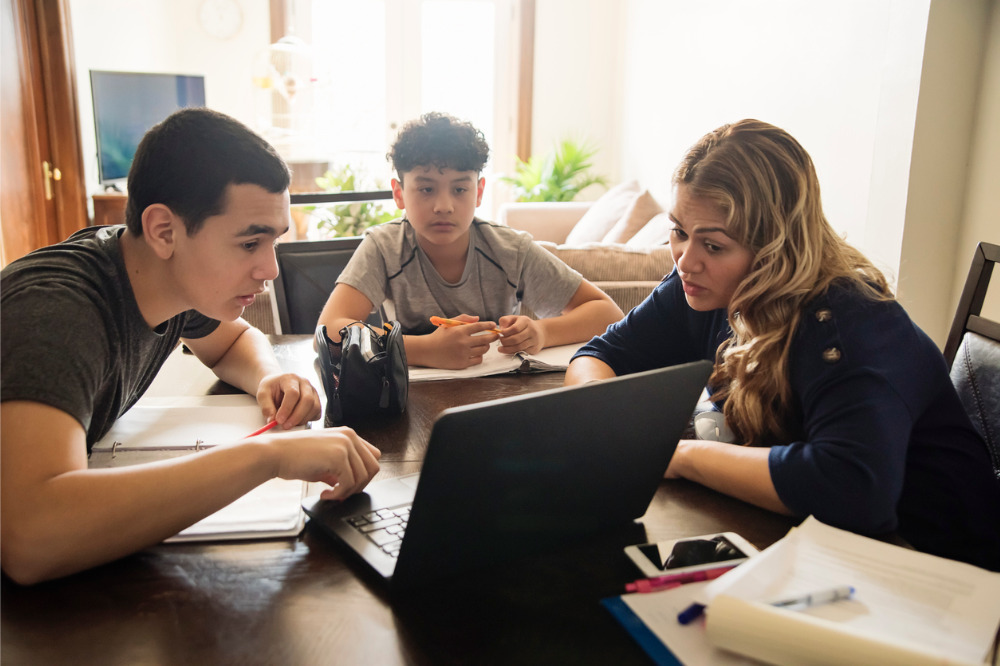
by Katrina Lawrence, Regional Sales Director & Executive Sponsor of ANZ K-12 Education Vertical, Dell Technologies
With many children’s lives ‘digital by default’ following a year of accelerated and unprecedented change, the reality of distance and remote learning is now a central pillar of education. Tech is firmly established as the foundation of learning, and when it comes to the role of digital in the classroom, we are beyond the point of no return.
As we reflect on the scale of digital migration in education in the last twelve months, 94% of institutions are developing policies for at least one form of remote learning. Building on the lessons learned is essential to enhancing learning experiences, teaching capabilities, and student achievement. However, the key to maximising possibilities relies on connectivity, accessibility, and harnessing a culture of digital inclusion. Only when these levers are addressed effectively can we truly build a global, equitable, and future-proof learning environment for all of society.
Around the world, different age groups and communities have been affected to varying degrees by adoption of digital learning. While over 80% of children have access to the internet in North America and Europe, these figures fall considerably lower to 70% in the Middle East and Latin America, 55% in Asia, and 40% in Africa. In Australia, the number of Internet users increased by an estimated 265 thousand (+1.2%) between 2019 and 2021. However, there is still a digital divide between urbanised areas and rural regions. For instance, approximately 26% of children under the age of 15 in remote areas of New South Wales, do not have internet at home. It is currently estimated that there are still over 2.5 million Australians that aren’t online.
Digital Culture: Building better on strong foundations
Technology is reimaging the education sector on a global scale, from preschool through to higher education. In recent years, students at all levels have been taking advantage of technology on-demand to meet their own learning needs and chart their path to workforce readiness.
We have seen this evidenced first-hand in our Solar Learning Labs Program, where we are partnering with local higher education institutions to support remote Indigenous communities with technology workstations, and provide critical infrastructure for digital learning to the wider community.
In schools, EdTech solutions in the form of virtual collaboration and data synchronisation tools have created opportunities to transform the learning experience and prepare students for a digital-first world. This is allowing teachers and students to connect via live-streamed sessions, avail of app-fuelled experiences, and even participate in virtual field trips.
We are at the beginning of this exciting journey, which requires the evolution of processes of collaboration, upskilling of educators, and mapping out a concrete digital strategy. This pathway is about much more than just devices and connectivity. People are the centre of this change and we need to ensure that along with access to technology, the learning culture evolves too. For example, wheeling out computers in schools is not enough on its own – teaching methods must be redesigned around data-driven technologies. Future-facing digital cultures must be fostered to truly support students for the long-term.
So, what should digital transformation in the education sector actually look like?
The provision of devices with broad mobile carrier support which enable all students to access the digital classroom and learning materials, irrespective of broadband internet access is imperative. A globally connected virtual classroom can bring learning to every student regardless of language, comprehension style or geography.
Improved connectivity and agile hybrid cloud management will mean steady workflows when using demanding software applications for science, design or engineering subjects. Hybrid-cloud infrastructure can enable in-school and off-site access to resources. It also means the provision of robust devices and video collaboration tools for modern and accessible education. But this is only the foundation of digitally driven learning resources, that must be supplemented with efforts to enhance digital literacy for children and parents to ensure those without experience in this sphere are not disadvantaged.
Front seats in the future classroom
Once 5G is widely adopted, new technologies will come online, creating exciting education opportunities not previously imagined – exponentially enhancing the scope of possibility for educators and students.
Think about the possibilities of introducing VR into the digital classroom, transforming the realm of educational content and entertainment, and making lessons more engaging and immersive. Imagine AI augmenting the teacher’s role, while assisting and supporting on both administrative and interactive tasks. When it comes to higher education, High Performance Computing (HPC) and AI are already turbocharging university research, resulting in a data deluge, underscoring a real need for speed when it comes to analysis. What’s more, the impact of education can be better assessed in real-time with data-driven technologies, making it possible to measure the impact and gauge fresh insights.
Getting the digital classroom right
McKinsey analysis on the impact of technology on educational outcomes calls for a thoughtful approach, rather than box-ticking exercise. It highlights the need for the correct use of technology in classrooms, emphasising the benefits of augmenting teacher’s instructions and integrating with full lesson plans, rather than as an add-on. The sweet spot for EdTech occurs when the technology is fit for purpose, and students and teachers are well versed in using the tech. When it comes to the digital classroom, an ecosystem of stakeholders, from educational institutions, to content providers, third-party tech partners, and NGOs, all need to work together.
Bridging the digital divide has never been so crucial as we look to close gaps in access to education. Rethinking education can help us to build a more resilient world which we all know starts with putting students first.


